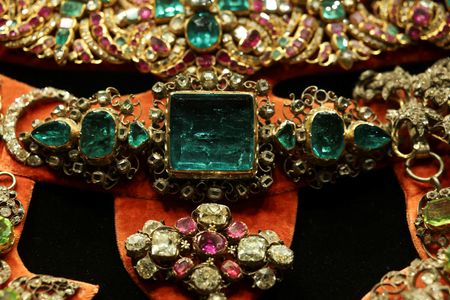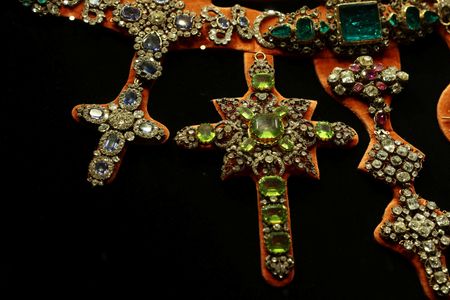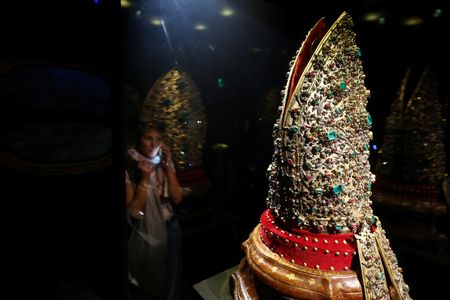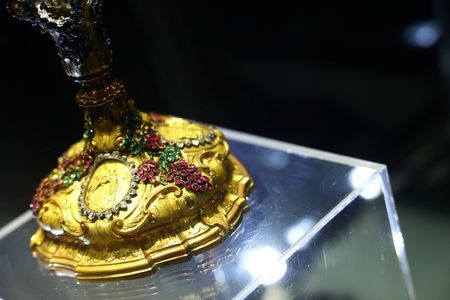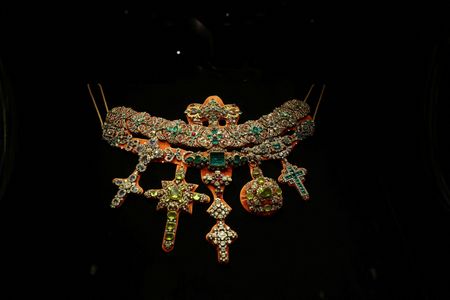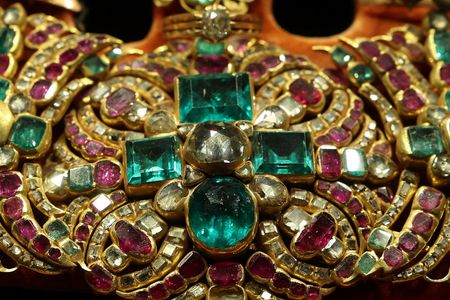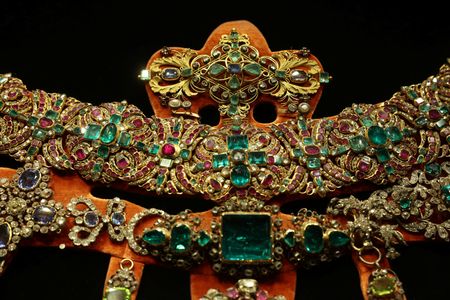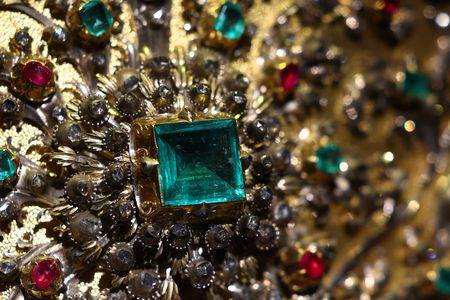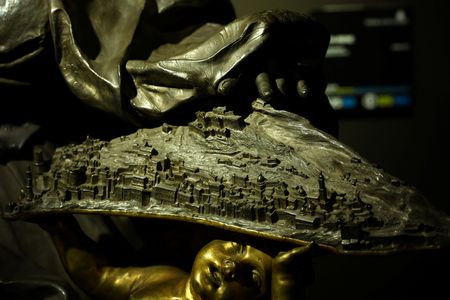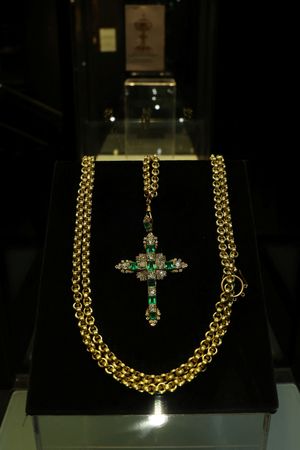By Giselda Vagnoni
NAPLES (Reuters) -With the art world on high alert for any sign of the missing Louvre jewels, one Italian collection says its method of creating a photographic fingerprint of its own priceless gems and artefacts could make them harder to break apart and sell on.
A team of gemology experts has spent more than a decade studying the most valuable pieces of the collection at Naples’ Tesoro di San Gennaro. Using microscopes and specialised equipment, the team has photographed more than 10,000 stones.
As well as the armed security and alarmed displays that provide physical protection for the site, the process has allowed them to certify the unique characteristics of the gems to provide a kind of forensic fingerprint that experts liken to DNA.
Major European museums have declined to comment on their security protocols in the wake of the Louvre theft, but the Naples method offers a rare insight into some of the measures used by institutions.
LOUVRE DIRECTOR HAD WARNED ABOUT SECURITY
“If the Louvre had adopted this security system, thieves would not be able to resell the stones from the stolen jewellery,” Ciro Paolillo, a former professor of investigative gemology at La Sapienza University in Rome, who led the mapping work, told Reuters.
“The stones would be identified, even if cut, at the first official quality certification by an international body.”
Reuters was unable to verify whether the French museum had undertaken a comparable analysis of the stolen stones. The museum did not respond to requests for comment.
Louvre director Laurence des Cars has said she had repeatedly warned that the centuries-old building’s security was in a dire state. She said exterior security cameras did not offer full coverage of the facade, adding that the window through which the thieves broke in was not monitored by CCTV.
The Paris prosecutor said on Sunday suspects had been arrested over the robbery, but declined to give further details, saying newspaper reports about the arrests would hinder the search for the stolen jewellery and the perpetrators.
MUSEUM WAS MAFIA TARGET IN 1975
The San Gennaro treasures, a trove of sacred art and jewels, have been assembled over seven centuries from donations from popes, royals and the wealthy. It includes a cross adorned with emeralds and diamonds given by Joseph Bonaparte, the eldest brother of Napoleon, who was king of Naples in the 1800s.
Nestled beside Naples’ cathedral, the museum houses over 21,000 pieces, among them a mitre encrusted with nearly 4,000 precious stones and a necklace with over 1,500 gems.
It is named after the fourth-century martyr who is the patron saint of the southern Italian port.
Although no official appraisal of the collection has ever been conducted, Francesca Ummarino, the museum’s director, told Reuters that the mitre and the necklace together have an estimated value of around 100 million euros ($116 million).
It also includes 53 silver busts, most dating back to the 17th and 18th centuries, each weighing around 200 kg, she said.
The Italian team led by Paolillo analysed samples of silver and gold to trace their origins to specific workshops in Naples’ historic Goldsmiths’ Quarter.
However such metallurgical mapping, no longer possible as alloys are now standardized by law, would not help in case of a heist.
“The criminals would melt down the masterpieces, making it impossible to understand the alloy,” Paolillo said.
Unlike most religious artefacts in Italy, the collection does not belong to the Vatican or the state. It is owned by the people of Naples and managed by the “Deputazione”, a lay institution founded in 1527.
The Treasure of San Gennaro was kept in the vault of the Bank of Naples for nearly 30 years following an aborted robbery attempt orchestrated by the local mafia, the Camorra, in 1975.
It was reopened to the public in 2003, and since then, no robbery has been reported, despite the city’s crime index remaining high.
“We have anti-theft security windows, all equipped with alarms. We have a military patrol on duty 24 hours a day at the museum entrance, and if, unfortunately, any objects were to be stolen, the mapping of the stones would allow us to recognise them,” said Riccardo Carafa d’Andria, vice president of the Deputation.
“Out of deep devotion to their patron saint, Neapolitans do not touch the Treasure of San Gennaro — and they would never allow anyone else to touch it either.”
($1 = 0.8575 euros)
(Reporting by Giselda Vagnoni in Rome and Ciro De Luca in Naples; Additional reporting by Catarina Demony in London; Editing by Alison Williams)

